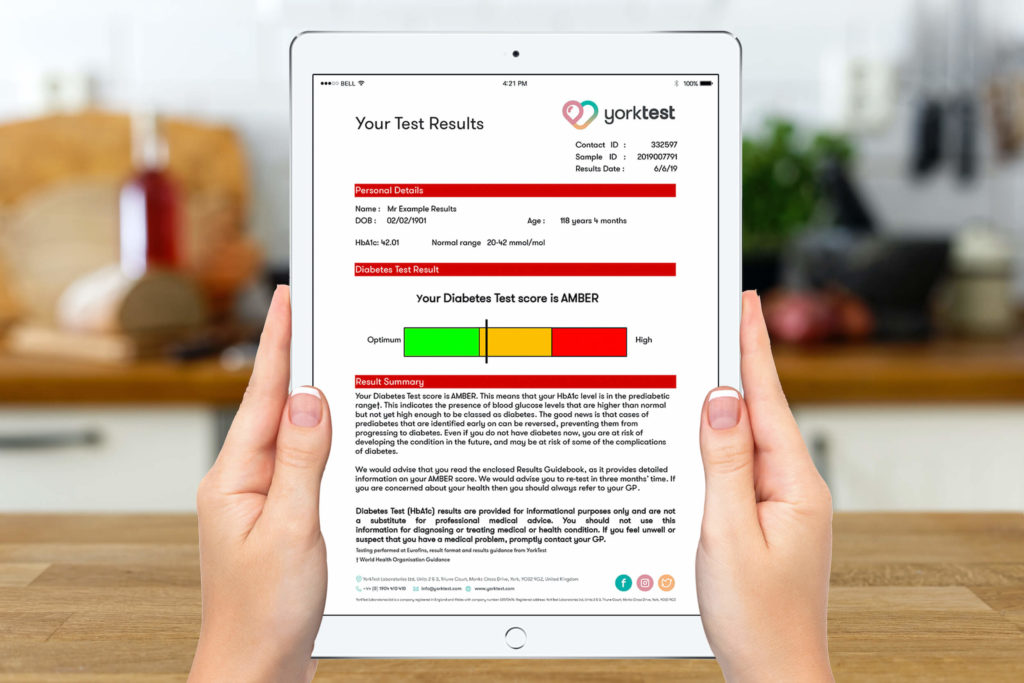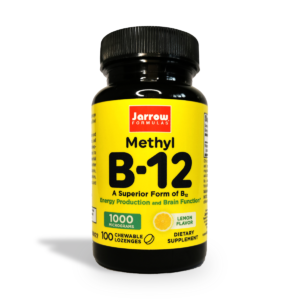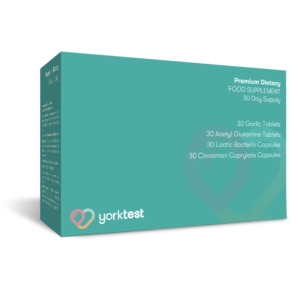What is prediabetes?
Prediabetes, also known as borderline diabetes, is when you have higher than normal blood sugar in your system, also known as Hb1AC. A study shared by global diabetes community, Diabetes.co.uk, discovered that between 2003 and 2011 the number of people in England with prediabetes more than tripled, with 35.3% of the adult population or 1 in every 3 people having prediabetes.
What is Hb1Ac?
Hb1AC, also known as ‘1AC’ means glycated haemoglobin. It’s caused when haemoglobin, a protein within your red blood cells (which carry oxygen) combines with the simple sugar, glucose, and becomes ‘glycated’. The higher your blood sugar levels, the more prevalent Hb1AC is in your system.
How does hba1c differ from a blood glucose level?
Hba1c differs from a blood glucose level since it measures the concentration over two to three months. Blood glucose levels only show sugar levels in your blood at a single point in time, on the day the test is taken.
Your red blood cells survive in your body for 8-12 weeks before they renew, and therefore using a simple home prediabetes blood test, these levels can be measured to determine glycated haemoglobin (or HbA1c). This result indicates your average blood glucose levels over a longer time period, providing a more accurate overview of your prediabetes level, and risk of developing Type 2 diabetes.
Is prediabetes, diabetes?
While prediabetes does not mean you have diabetes, it does mean that you are “on the way to” developing Type 2 diabetes. This a condition which causes the insulin your pancreas makes to not work properly, or your pancreas can’t make enough insulin, meaning that sugar builds up in your blood.
Type 2 diabetes can make you prone to developing chronic conditions. If your Hb1AC levels are consistently high, this can damage your blood vessels which are vital to carrying blood around your body. In time, this can cause additional side effects and conditions, increasing your risk of developing problems like nerve damage, heart disease, skin infections, reduced eyesight, and more.
Around 80% of the cost of diabetes on the NHS is spent on treating complications caused by the condition. But this can change by reducing the number of people prone to Type 2 diabetes and later developing it.
Whether you have prediabetes or are unsure of your risk, the good news is that you can try and avoid all of the above by taking control of your lifestyle and making positive steps to care for your health.


Did you know, about 90% of people with diabetes have Type 2 diabetes?
What is the range of prediabetes?
Prediabetes HbA1c ranges are from 42mmol/mol to 47 mmol/mol, with levels over 48 of most concern, since these levels can indicate you have Type 2 diabetes.
- Normal levels. Below 42 mmol/mol
- Prediabetes. 42 to 47 mmol/mol
- Diabetes. 48 mmol/mol or over


Prediabetes symptoms
Symptoms of prediabetes are hard to pinpoint as they can be associated with conditions caused by insulin resistance (which may later develop into prediabetes), such as polycystic ovarian syndrome.
There are, however, symptoms that can indicate high levels of Hb1AC (a level used to monitor your blood sugar levels) and therefore could suggest you have Type 2 diabetes:
- Tiredness
- Blurry vision
- Increased thirst
- Increased urination, especially at night
- Sores or cuts that won’t heal
Who is most at risk?
While prediabetes can affect anyone of any age, gender, or race, there are some primary factors which can increase your risk of developing the condition:
- Age – usually people aged 45
- Gender
- Ethnicity – you can be more genetically prone if you’re Afro-Caribbean, South Asian, or Native American
- A family history of diabetes
- A high body mass index (BMI) – over 25
- A waist circumference over 90 – 99.9cm
- If you have high blood pressure
- Have given birth to a baby who weighed over 9 pounds
Some health conditions and lifestyles can also make you predisposed to high sugar levels:
- Women who have polycystic ovaries
- People with high cholesterol
- Having a poor diet
- Sufferers of sleep apnea
- Smokers


Can prediabetes go away/ is it reversible?
Yes, prediabetes can be reversed by making changes to your lifestyle. The sooner you know your level of prediabetes, the earlier you can do something about it and reduce your chances of developing Type 2 diabetes in the future.
How to treat prediabetes
Prediabetes and reducing your risk of developing Type 2 diabetes can be treated by making a number of dietary and lifestyle changes. From eating an increased variety of healthy foods to incorporating more exercise into your routine, following a low GI (Glycemic Index) diet is the first step in keeping your blood sugar level low – it’s just about the most critical balancing act your body undertakes.
Your blood sugar not only determines your weight, correcting insulin resistance, it is also the key to high energy, stable mood, improved concentration and longevity. Taking the following steps can help put you on the right path to a healthier life and treat prediabetes:
- Low GI diet. The best way to achieve optimal blood sugar balance is by opting for a low glycemic index (GI) diet, such as a Mediterranean diet.
- Lose weight. Achieve a BMI under 25
- Exercise more. Exercise for 30 minutes at least 3 times a week
- Increase your intake of fibre. Half of your plate should consist of low GI vegetables, and the other half decided into protein-based food such as meat, fish, eggs, beans or tofu, the other for one serving of starchy food such as brown rice, wholemeal or gluten/wheat free pasta, couscous, quinoa, or pearl barley.
A study found that once people within the group made changes to their diet, 58% showed a reduction in their prediabetes levels by maintaining these changes long-term. From 8 weeks to 6 months, how soon you can reduce your blood sugar levels relies on you making the right changes for your health.


Low GI diet for diabetes
A low GI diet for people with diabetes helps by monitoring how quickly each food affects your blood sugar (glucose) level when that food is eaten on its own.
How does a low glycemic diet work?
The glycemic index (GI) is a rating system for foods containing carbohydrates. Carbohydrate foods that are broken down quickly by your body and cause a rapid increase in blood glucose have a high GI rating. Whereas, low or medium GI foods are broken down more slowly and cause a gradual rise in blood sugar levels over time. They make us feel fuller for longer, less hungry and are more nutritionally balanced.
Low GI diet plan
Eating a low GI diet doesn’t have to be a shock to the system. Our nutritional therapists have summarised their top tips on changing your diet to reduce your risk of developing Type 2 diabetes.
- Eat carbohydrate foods that are low in GI along with foods that are high in protein. Protein has a high satiety rate (how soon it satisfies your hunger) and can make you feel fuller for longer, which in turn can prevent snacking temptations. One example would be chicken with boiled new potatoes, salmon with whole wheat pasta, or a scrambled egg on wholegrain rye toast.
- Eating high fibre foods is important. The high fibre content in a food lowers the GI and also improves your metabolism through a healthier digestive tract. Examples of high fibre foods with low GI are beans and quinoa.
- Eat regularly. You can eat three meals and two snacks per day if they all contain low GI foods, of course!
- Always remember to consider your food intolerances too. Eating foods which can irritate your digestive system can disturb your immune system.
Simple swaps for a low GI diet
- Opt for brown and wholegrain versions of foods like pasta, rice, bread and crackers
- Choose new potatoes with skins on, and boil rather than mash, bake or fry
- Ensure you combine protein, such as dairy, chicken or omega-3 fatty acids, like fish with carbohydrates such as potatoes and pasta
- Unsalted seeds, nuts and oatcakes make a great snack
- Avoid highly processed instant foods and ready meals
- Try thickening sauces with nut butter or tahini, rather than cornflour
- Don’t have more than 1,500 mg of sodium per day
- Avoid a high intake of alcohol, which can be high in sugar
- Restrict the number of foods you eat with added sugar and unhealthy fats
Related content












